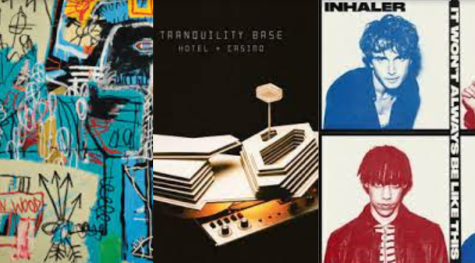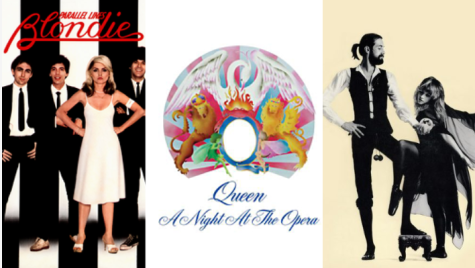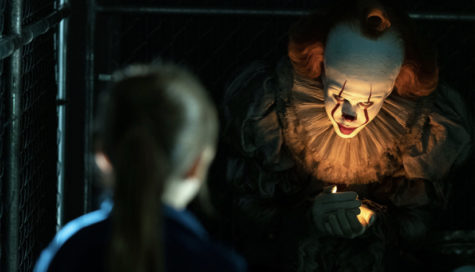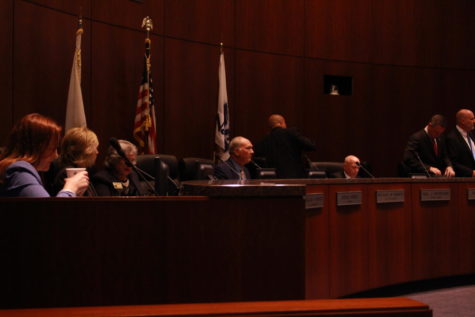One way to avoid migraines, minimize your stress
I was in middle school when I learned the easy acronym detailing the signs of a stroke: “F.A.S.T.,” facial drooping, arm weakness, speech difficulties, and time. So last September, when I was cowering in the bathroom of NNHS, unable to feel half of my face or form a coherent string of words, I thought I was a 16-year-old victim of a freak stroke.
I was supposed to be enjoying that night with my friends, watching Mr. NNHS, but now it’s mostly wiped from my memory. In flashes, I remember being carried to the car and vomiting not once but four times in the hospital’s waiting room. I recall my parents, in their hysteria, thinking I might have popped some type of drug, and I remember the sweet relief of the cocktail of painkillers I was given. Finally, I remember when the ER doctor informed my family and me that I had just suffered a very intense Basilar Migraine.
In short, a Basilar Migraine is a type of migraine with aura, commonly associated with sharp pain in the back of the head. Aura, being a good warning sign of a basilar migraine, is a group of symptoms that include, but are not limited to, dizziness, vertigo, slurred speech, and loss of balance.
The pain of the migraines I had gotten previous to this one had ranged from a six to seven on a scale of 10. They usually started with part of my vision going fuzzy and would end with me laying on the couch in what I had previously thought was excruciating pain. But, after I took a nap and ate some food, the pain would typically dull down and eventually slip away. However, that was obviously not the case this time around.
The numbness had started in my foot, but, because I had been sitting in an auditorium chair for 20 minutes, I just thought my toes had fallen asleep. The feeling began to grow further up my leg and into my torso, and my concern grew with it. At that point, I whispered to my friends about the creeping pins and needles and we came to the conclusion that I must have been sitting funny. However, I knew something was wrong when the numbness moved onto my tongue and down my throat.
At that point I decided to leave the crowded auditorium for the cooler, less populated women’s bathroom. I sat on the tiled floor, unable to stand up and walk out, and unable to call my friends or family: my phone had, in a bit of cruel irony, died, just like the feeling in the right side of my body. Eventually, my friends realized my 20-minute trip to “use the bathroom” had lasted an abnormally long time and one of them came to see what was wrong.
The pain was intensely horrible, almost reaching the top of that 10-point scale. I felt as if a nail was being drilled into my head, a hammer was being taken to my skull, and my brain was being run over with a bulldozer, all at once. Now please excuse my somewhat violent construction related examples, but they help to accurately describe the pain I was feeling. That pain, however, was not the thing that concerned me most.
As a person who enjoys being in control, I hated losing control of my body. Similar to how I hated puberty, the fact that I couldn’t have done anything to stop what had happened to my body caused me the most panic.
The day after, my mom told me the ER doctor said that once I get the first aura symptoms, nothing, besides an IV in the Emergency Room, could stop one of my migraines from running its course. So my mom and I trekked to see a neurologist and got a prescription medication that would lessen the symptoms if taken right away.
I must carry my prescribed pills wherever I go. I need to know how and when to spot my symptoms. I will eventually have to go to neurologist appointments by myself. This incident was just the beginning of my endeavor into a world of adulting, and that might be one of the scariest parts.
In the days after, when my mom was telling all of our family and friends about the traumatic event, I realized how, save the intensity, common migraines were amongst students. According to the Migraine Research Foundation, “about 10% of school-aged children suffer from migraines.” At younger ages boys are more susceptible to getting migraines but, by age 17, around 28% of young females have suffered a migraine versus 8% of young males.
One of the main culprits of these intense headaches: stress. The fact that teenage students are overworked and overscheduled is old news, and the issues stress can cause have been talked about for what seems like forever. But that doesn’t mean these problems aren’t still relevant and pressing. They can have an effect on school behavior, sleep patterns, and more seriously, the health and safety of students.
In the regimented Health classes at Naperville North, the hope is that all sophomore students leave the program with one thing: “health is individual.” This could not ring truer than in the fact that everyone’s body reacts differently to stress and each has its own warning signs of overwork.
On the positive side, there are ways to combat and prevent the negative effects of stress. Appropriately scheduling your time and listening to your own body and its warning will allow you to be as healthy as possible as you combat stress. It might even save you a spontaneous trip to the ER.

This is Kate’s third year on The North Star and she is very excited to tackle her new job as the publication’s first Special Projects Editor. She is...











